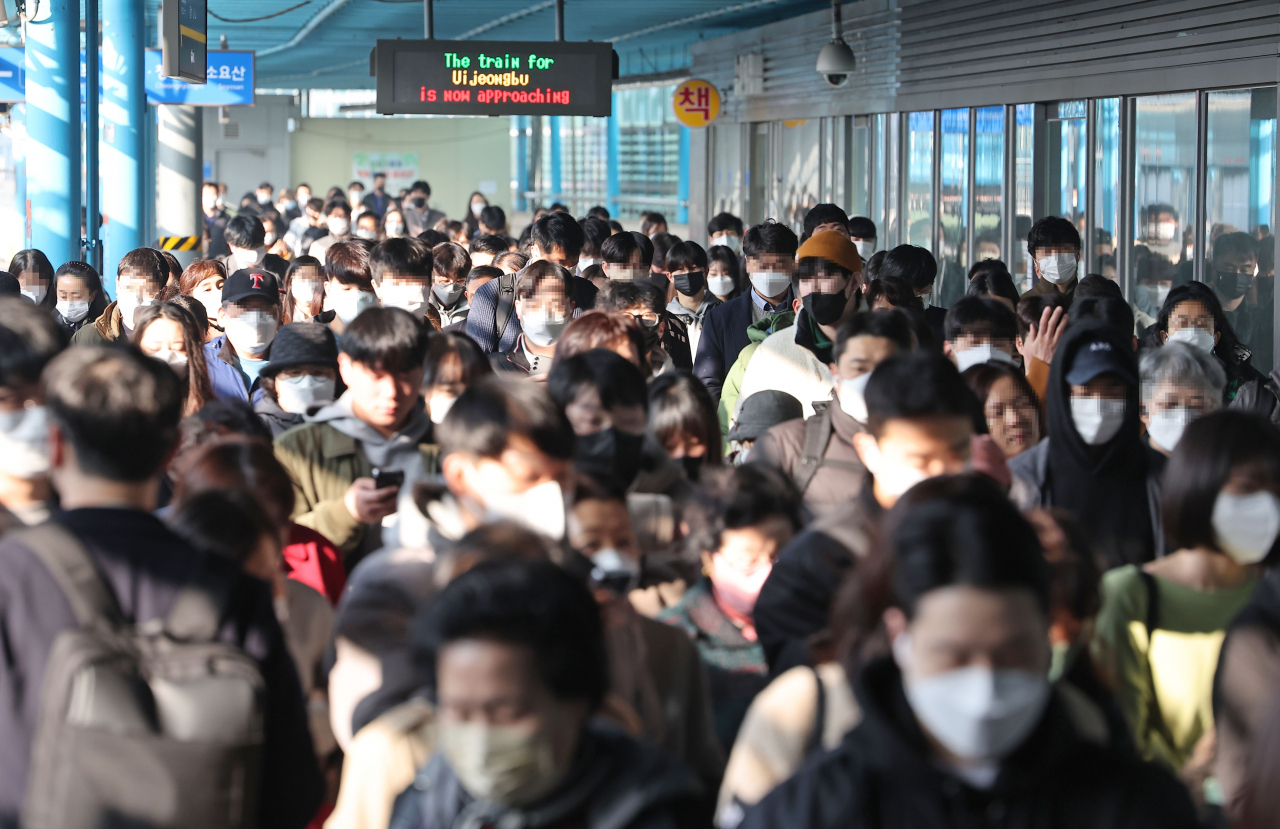 |
Sindorim Station on Seoul Metro line 1 is crowded with commuters on the morning of March 20. (Yonhap) |
Subway operators are to be issued new guidelines that will require them to consider not stopping at stations when trains are overcrowded, according to the Ministry of Land Infrastructure and Transport.
The ministry said that once the new guidelines are issued, local governments will send emergency text-message alerts guiding subway users to alternative transportation.
The ministry on Tuesday announced its plan to adopt the emergency alerts to deal with excessively crowded subways, revising its response manual about large-scale accidents on urban railroads.
The manual divides the number of people inside the train and subway stations into four levels of capacity -- “130 percent or less,” “130-150 percent,” “150-170 percent” and “170 percent and over” -- in order to manage the crowds in certain places and prevent accidents due to overcrowding.
A crowd level of over 150 percent is something that can be seen on Seoul Metro lines 4, 7 and 9 between 8:00 a.m. and 8:30 a.m. currently, according to the ministry.
When the number of riders surges to the highest level of “170 percent and over," mobile phone messages notifying passengers that a subway will be skipping certain stations as well as other alerts can be employed.
Congestion will be calculated based on data from CCTV cameras, telecommunications operators and traffic card hits at turnstiles, from train and station platforms, corridors and stairways.
The subway operators will also take measures such as dispatching safety personnel to guide passengers and take emergency actions on platforms and other crowded parts of the station, the ministry said.
As part of its measures to prevent overcrowding in the subway, Seoul Metro will also increase the frequency of trains, activating spare trains on lines number 2, 3 and 5 before the second half of this year.
The Gimpo Goldline, which has the worst crowd levels, and line number 9 will both be supplemented with additional trains during the second half of this year and next year, respectively.







![[Today’s K-pop] Blackpink’s Jennie, Lisa invited to Coachella as solo acts](http://res.heraldm.com/phpwas/restmb_idxmake.php?idx=644&simg=/content/image/2024/11/21/20241121050099_0.jpg)